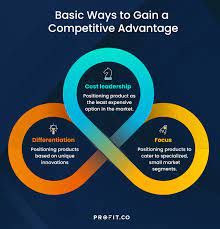Introduction
In a world fueled by data, making decisions based on facts rather than assumptions can be the differentiator between thriving and struggling businesses. Informed strategies are not only about acknowledging the present but also about predicting and preparing for the future.
Gathering Accurate Data
Before embarking on the journey of guiding business strategy using facts, organizations need to ensure that they have access to accurate and relevant data. This data can come from various sources, including market research reports, customer feedback, and internal performance metrics.
Data Analysis and Interpretation
Once the data is gathered, the next step is to analyze and interpret it effectively. Statistical tools and data visualization techniques play a vital role in uncovering patterns and trends that might not be evident at first glance.
Defining Clear Business Objectives
Data without clear objectives can be overwhelming. Businesses must establish achievable goals that are in line with their mission and values. This clarity ensures that the data is put to use in a purposeful manner.
Formulating Strategy Hypotheses
Based on the insights gleaned from the data, businesses can begin to formulate hypotheses for potential strategies. These hypotheses serve as the foundation for testing and experimentation.
Testing and Validation
Putting hypotheses to the test through pilot projects allows companies to validate their assumptions. This step is crucial in minimizing risks and refining strategies based on real-world outcomes.
Incorporating Continuous Learning
An agile approach to strategy involves continuous learning and adaptation. Businesses should remain open to change and iterate their strategies as new data emerges.
Risk Assessment and Mitigation
Data-driven strategies can also help in identifying potential risks and developing plans to mitigate them. This proactive approach minimizes the impact of unexpected challenges.
Collaborative Decision-Making
Involving key stakeholders in the decision-making process ensures a holistic view of the strategy. Sharing data-driven insights builds consensus and commitment.
Communication and Execution
Clear communication of the strategy is essential to ensure that all teams are aligned and understand their roles. Empowered teams are more likely to execute the strategy effectively.
Measuring Success
Establishing KPIs allows businesses to measure the success of their strategies objectively. Regularly tracking progress and analyzing the impact on key metrics is crucial.
Conclusion
Guiding business strategy using facts is a dynamic process that requires a commitment to continuous learning and adaptation. Data-driven decisions have the potential to reshape industries, drive innovation, and position businesses as leaders in their domains.


